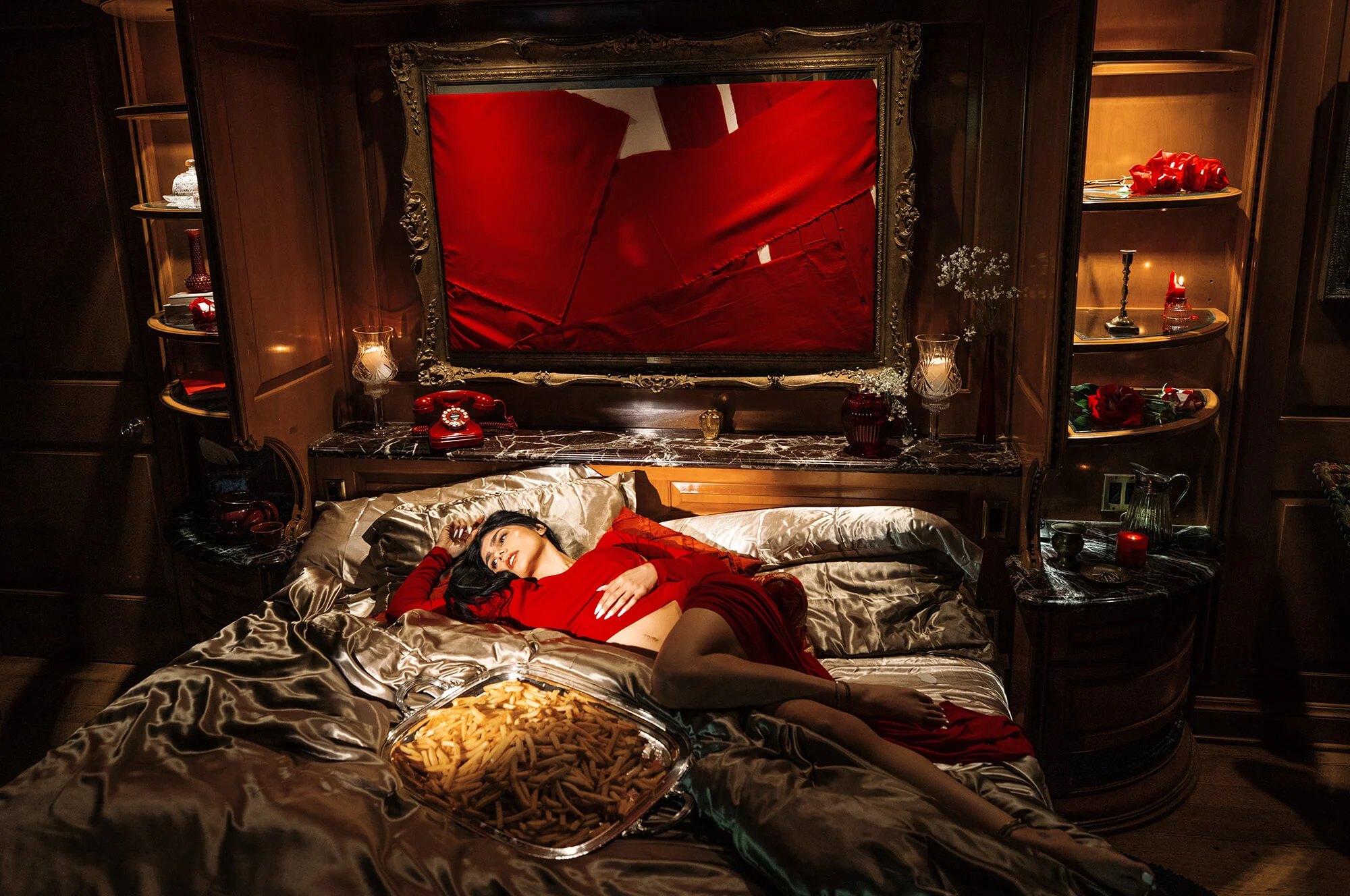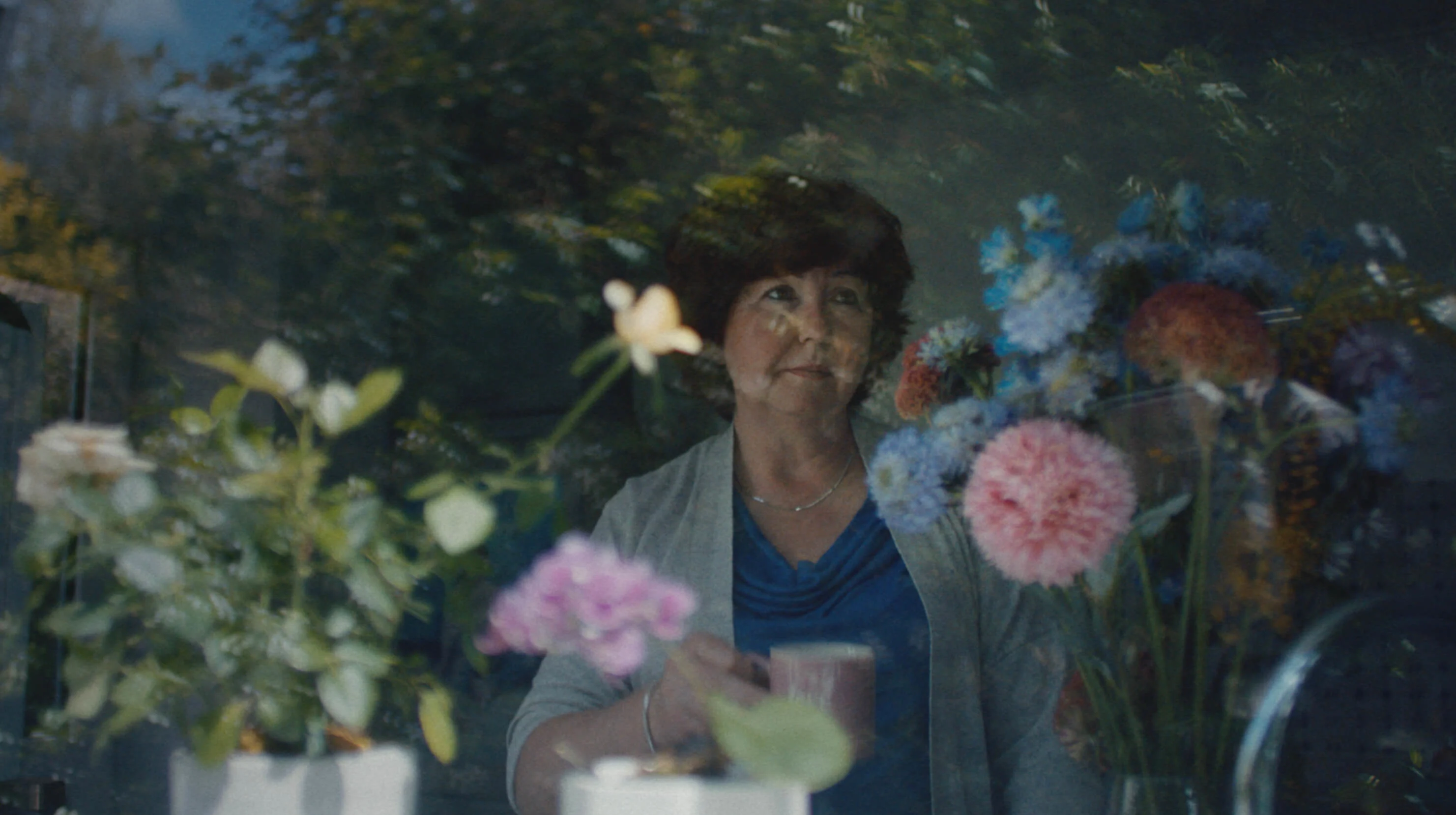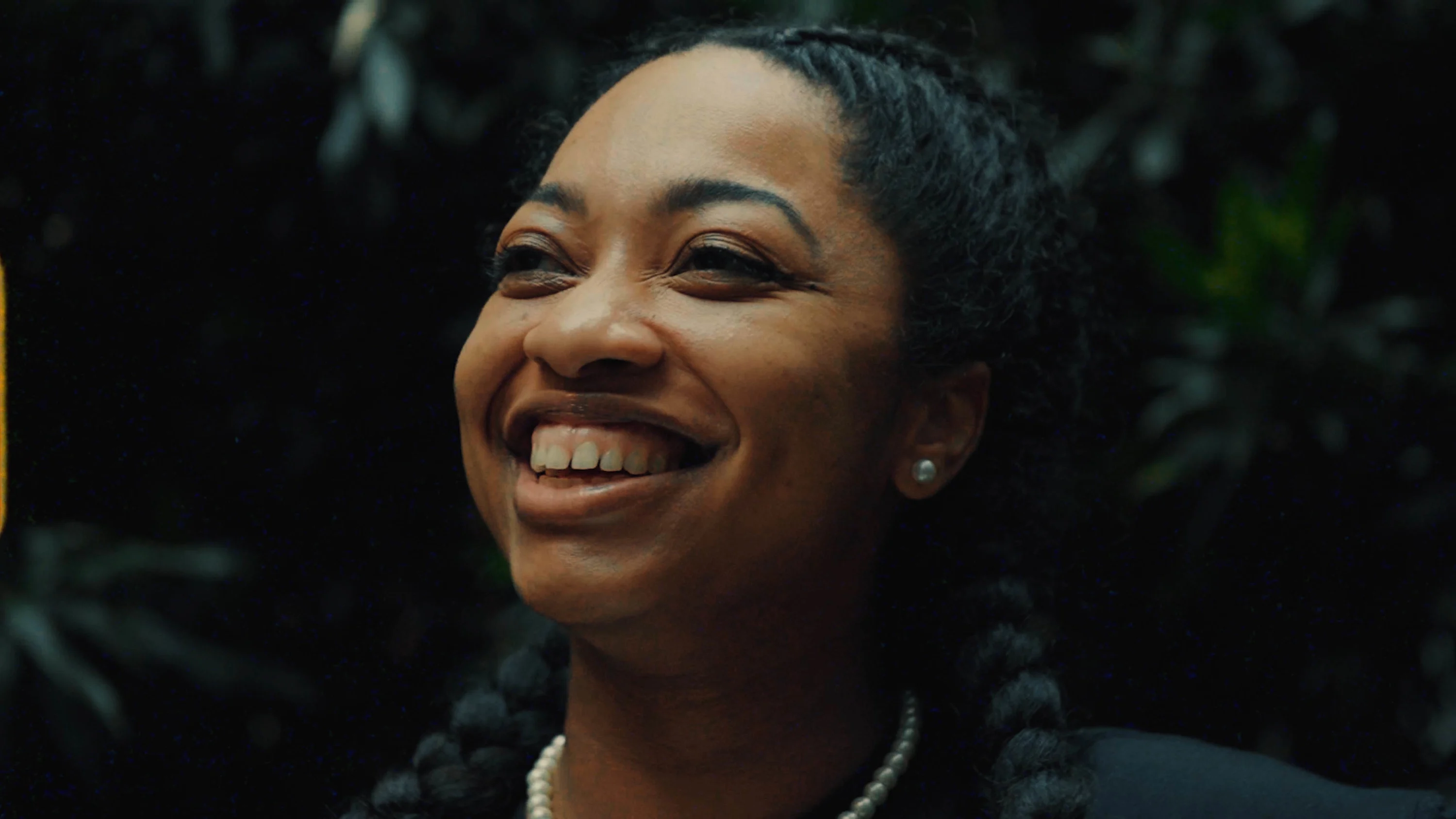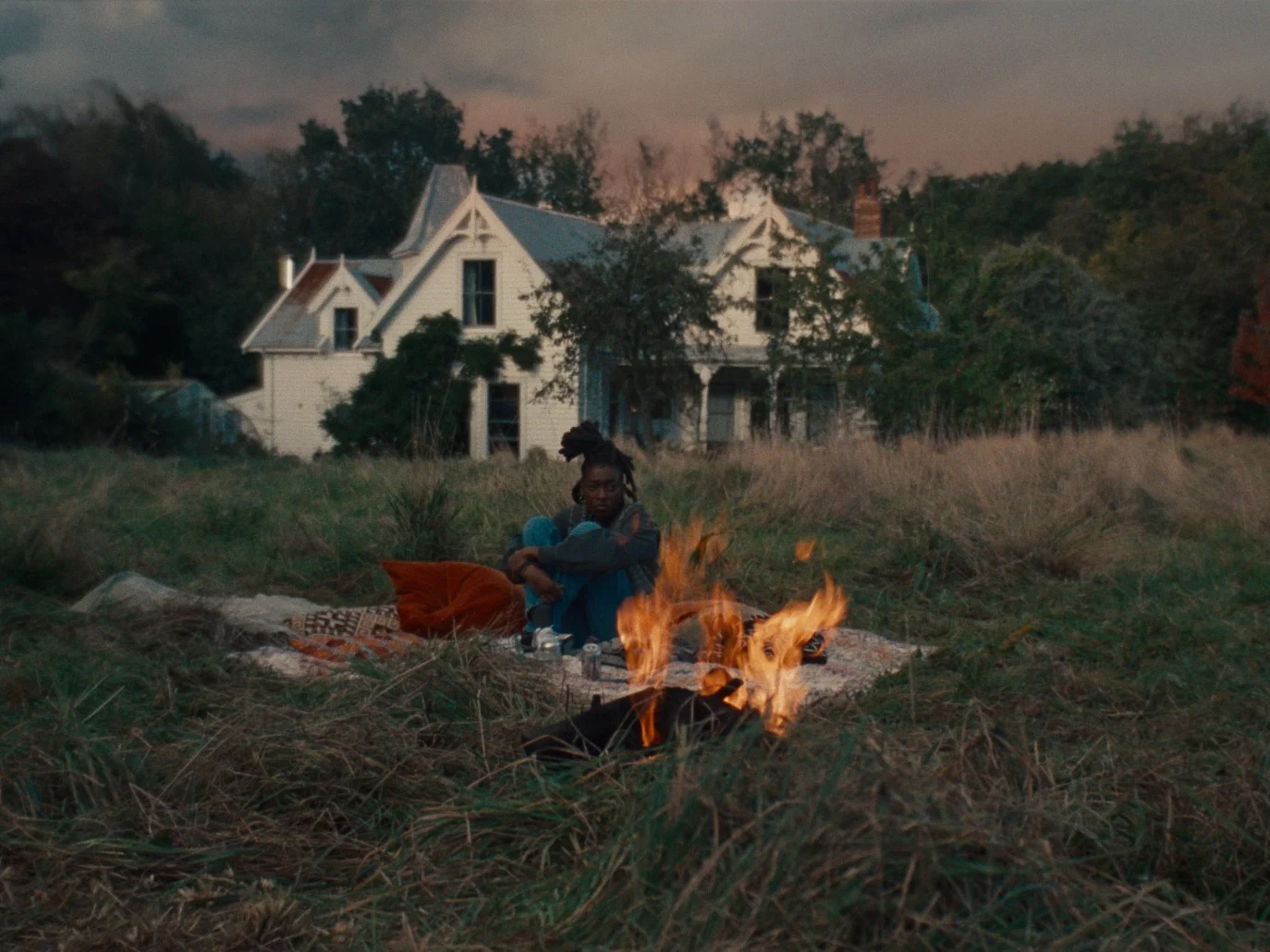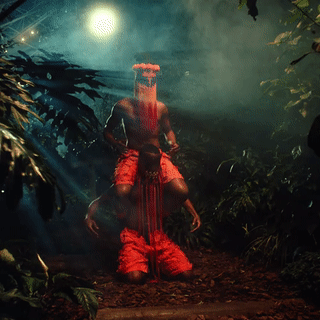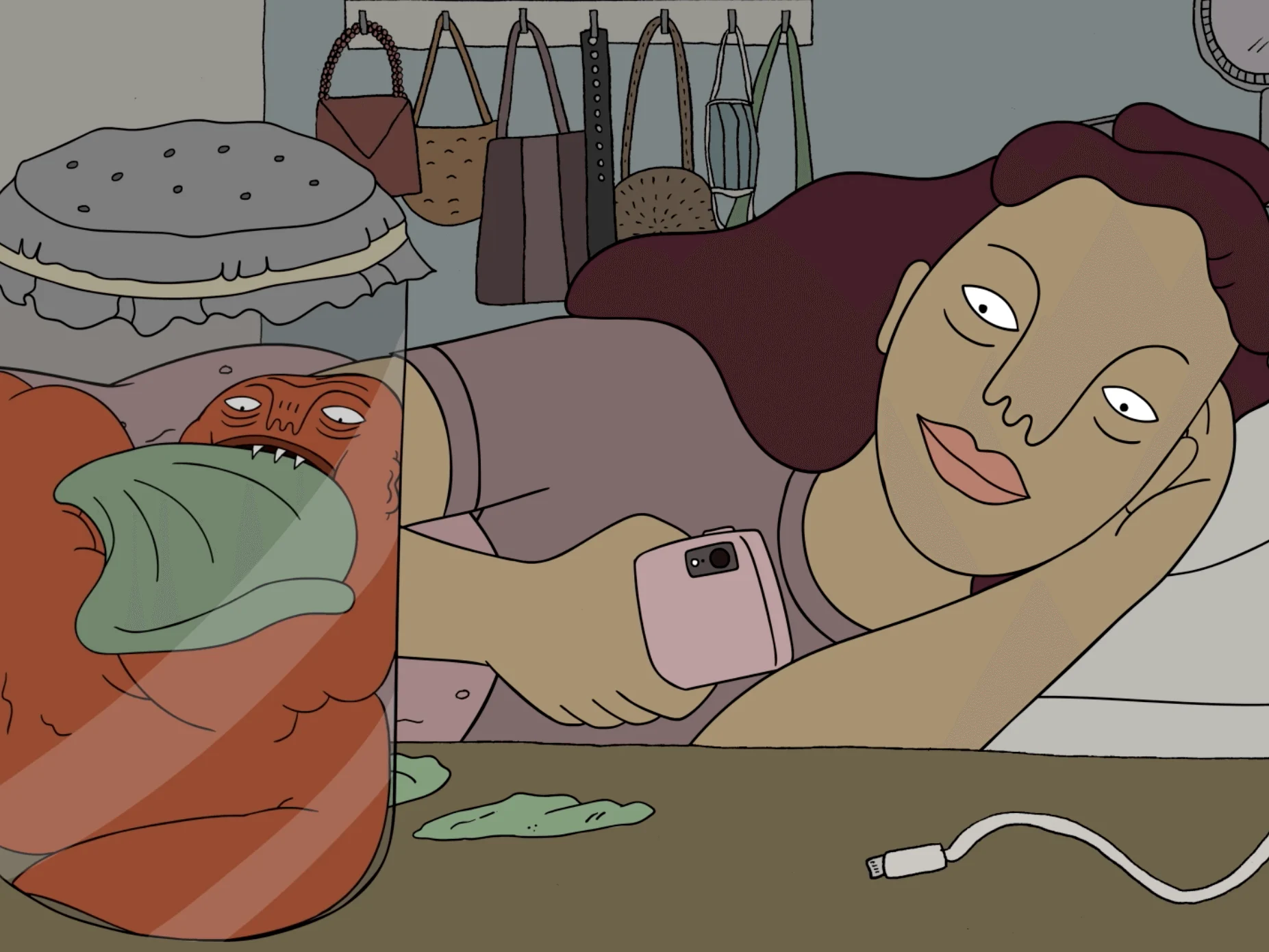
Blackalachia — Watch Moses Sumney’s conceptual live performance film
Watch Moses Sumney’s conceptual live performance film
WePresent are proud to bring you Blackalachia, a film by Moses Sumney, featuring a live conceptual performance by the inimitable artist himself. The epic, hour-long cinematic experience was shot in the Appalachian Mountains near Sumney’s home in Asheville, North Carolina, during lockdown in 2020 and was created to harness and celebrate the power of nature, technology, and music. Writer Doreen St. Félix spoke to Sumney about how and why this film came to be.

What was coalesced in the editing room is a personal statement of the auteur, who looks backward as he moves forward.
Blackalachia. This word slows the mind. There is its invented, internal music; on your tongue, hard consonant melts into soft vowel. And then there is the friction between the phonemes themselves. We are, at once, thinking of the man-made culture of the country and the geological zone that predates the concept of nation, the separation of continents, even humanity itself. We are in a place, an expanse that is both modern and ancient, regional and cosmic, mysterious and self-evident, and we cannot suppress the urge to explore, and so we do, following our guide, Moses Sumney.
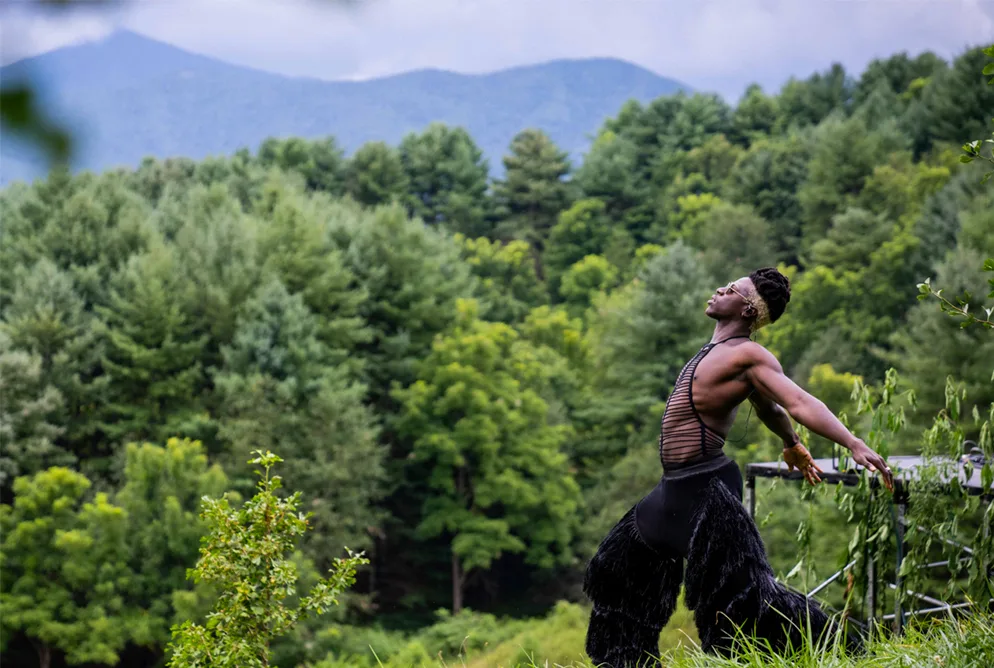
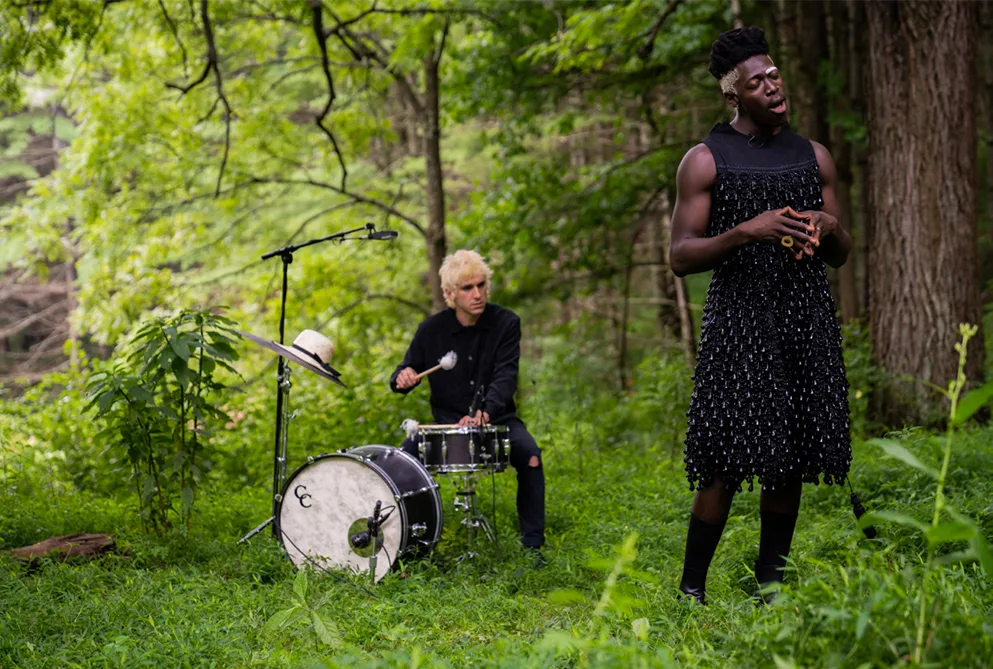
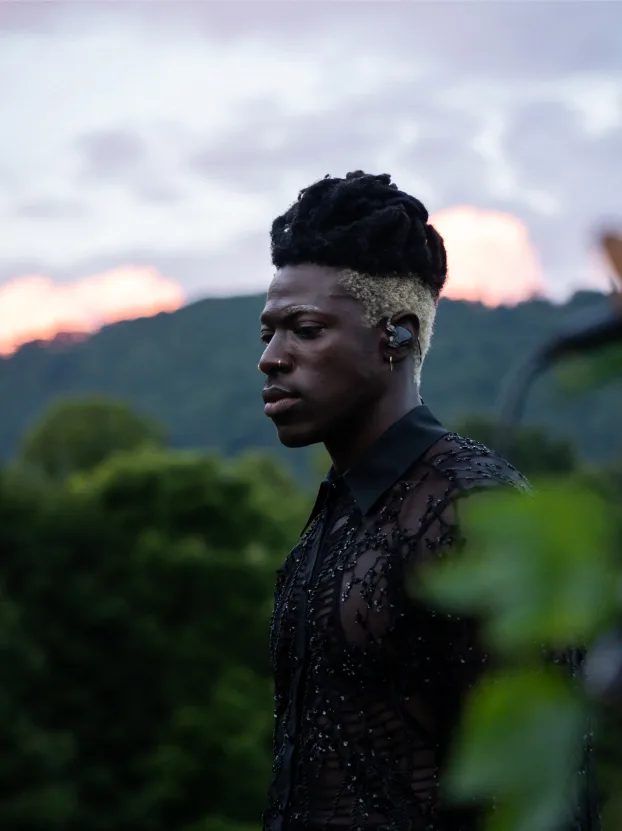




At 29, Sumney is one of his generation’s most lauded musicians. Blackalachia, a masterstroke of retrospection, is the first concert film from the artist. Sumney conceptualized and directed the hour-long piece, which was filmed in only two days in July 2020, amidst the tremendous vegetation of the Appalachian Mountains. Sumney creates a vision of the concert film that moves us to think of the concert as something other than an event of public consumption. He plays for no audience. There is no theater, save for the surrounding earth. Vines climb the minimalist stage, which Sumney and his band sometimes exit altogether, setting up on the flat of grassy lawn, or lacing through the leaves of dense brush. For all the swell of instrumentation, arrangements of songs from Sumney’s two albums, Aromanticism and græ, Blackalachia leaves you in a mood of thrilled quietude.
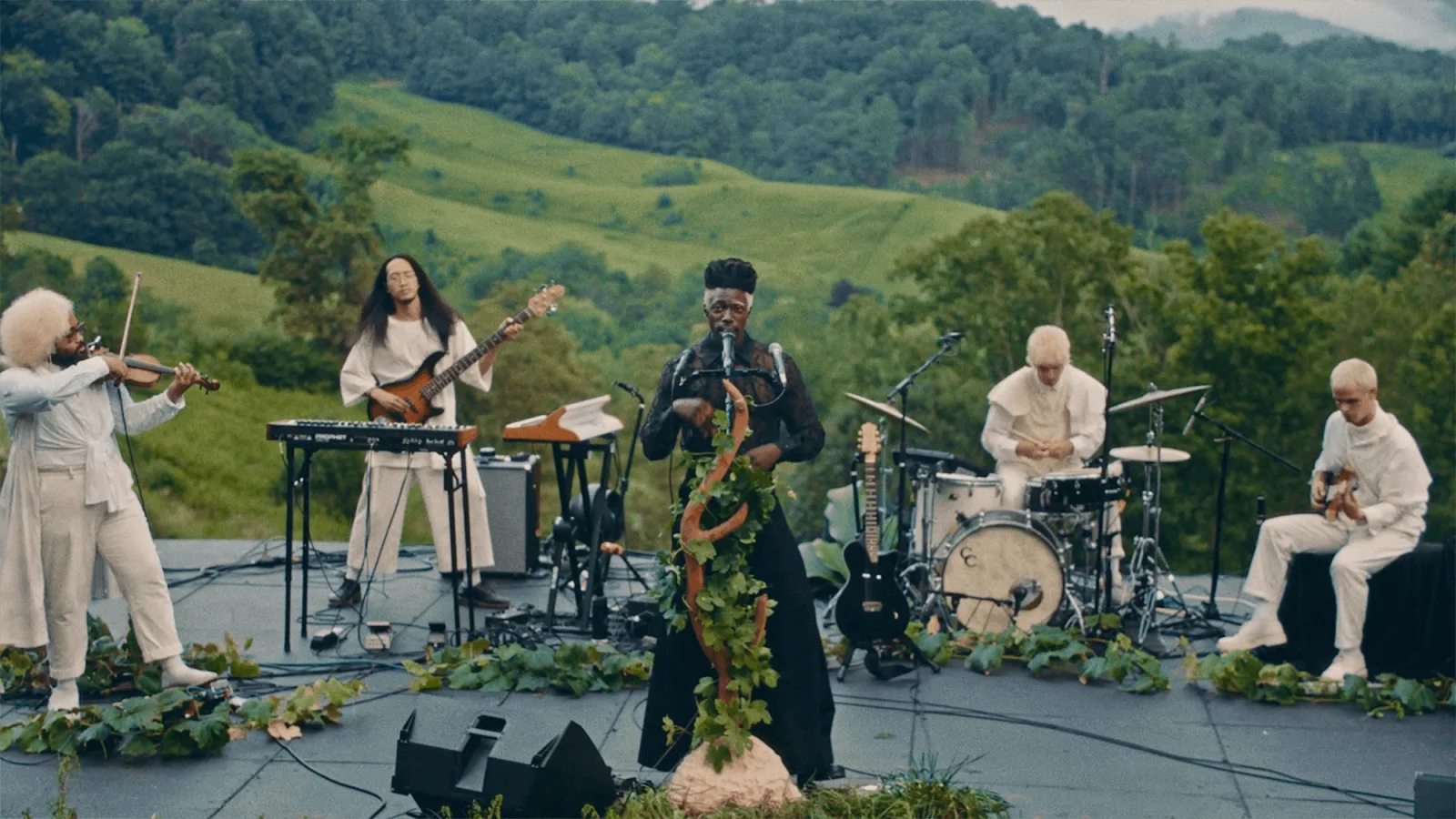
Nearly a year after the production of Blackalachia, Sumney and I meet, over video call, to discuss the project. “I live properly in the mountains. I’ll show it to you,” he says, picking up his laptop and facing it to a window of verdant green. He moved to Western North Carolina from Los Angeles a few years ago. “It feels so natural to me, even though I didn’t grow up in nature,” he tells me. “My family is always like, ‘What are you doing in the mountains?’” Sumney is almost compulsively prolific—he started writing græ just a week after the release of Aromanticism, in 2017—but he had found, back in L.A., that the din of the city wasn’t conducive to writing. He would make solo trips down to the Blue Ridge Mountains, a segment of the Appalachians, where the isolation of the environment coaxed the lyrics to flow around the nexus of his philosophical interests: multiplicity, loneliness, self-denial, what it means to submit wholly to the force of emotion.
The further I get into my career as an artist, the bolder I get, and I find that I’m more willing to reach further outside of myself, into these kinds of dreams and ideas.
To accompany græ, released in two parts in 2020, Sumney had planned a 60-page treatment for a work of international scale, with elements shot in Ghana, where Sumney’s family is from, and where he lived for a time as an adolescent. In the winter of the same year, his band lived with him in his Asheville home, eating, arranging, rearranging, and practicing, for the proposed film and a tour. By March, Sumney knew that his proposed project could not be, at least not in the form he had initially envisioned. “I had all these live arrangements and no outlet,” he says, hand on temple. The labor could not go to waste. “At some point, I was like, why don’t I just make a live album?” He mentions the Lauryn Hill and Nirvana Unplugged albums as “the lineage” he wanted to join. But “gathering indoors was taboo and potentially lethal.
The nearby mountaintops presented themselves to Sumney as a kind of stage where he might blur the lines between man and nature, a theme that’s seeded his music since his move to Asheville. (“On the long hike through / Blue Ridge Mountains, I can feel the earth / Overtake my skin,” he sings on Virile.) With his eyebrows, one bleached and the other black, Sumney is a creature of fashion. An opening shot from Blackalachia tracks Sumney from several feet overhead, as he dashes along a path, a voluminous black frock expanding his tall, thin build. The shape he makes, in the couture, all-black, his signature—by designers such as Dope Tavio, Kenneth Nicholson, Naassene, Phallic Cunt, and Geoffrey Mac; his band was dressed by Asheville artist Coco Villa—is that of some fantastic, undomesticated flora; he both collides into the grand verdure and is swallowed by it. “As the night becomes dawn,” he sings on In Bloom, “You and I become one.” About a clandestine romance with a recalcitrant lover, the line may just as well convey his philosophical and historical absorptions. You understand that Sumney is deploying his body and his body of work in the service of nurturing a lore. During our conversation, he brings up “the generational trauma of Black people having been the caretakers of the land and then divorced from the land.” “There is a history of Black people in Appalachia,” he says. “There is a history of Black music being the foundation of bluegrass and country. There is a history of migration into and out of Appalachia. I’m so deeply invested in a reintegration into nature.”
There is a history of Black music being the foundation of bluegrass and country. There is a history of migration into and out of Appalachia. I’m so deeply invested in a reintegration into nature.
Arranging what we might call the setlist meant “narrowing it down to the songs that felt the most cinematic:” Quarrel, with its three-act structure; Conveyor, with its clash of man and machine; Me in 20 Years, with its interest in destiny. There is a single moment of spoken narration, which is to say one of confession, that comes about halfway through Blackalachia: Sumney’s voice, speaking the line, “I’ve needed a space to articulate my own loneliness not at the level of nation, state, race, or place.” The word “Blackalachia” itself, I learn, one of freedom, is from the multinational novelist Taiye Selasi, whom Sumney interviewed when collecting the interludes for græ. “I was so afraid to say that line,” Sumney says. Those words, he continues, are deeply relevant to “how we consume the minority in art and culture.” Sumney, now, is the subject of his own gaze.
Blackalachia is a performance piece about performance, framed by the gradual passage of the day into blue-black night.
It was important to him that Blackalachia be grandiose, texturally complex, even exhibitionistic. Sumney has become interested in putting his body to use; in the film, he is as much a singer as a dancer. The work reaches for the mythological; suspended from a rig, he remixes, at one point, the legend of Icarus. For tonal references, he looked to ecstatic works, like the Aretha Franklin documentary Amazing Grace, and various Sun Ra performances. Visually, he was inspired by the tableaux of the photographer Deana Lawson. With his long-time cinematographer, Cristina Dunlap, Sumney creates a kind of chromatic drama with his own skin. In the night-time performances, the light turns his complexion cobalt. “There’s a lot of drama for me with the color blue,” he says. We relate instantly, discussing our shared childhood fear of looking “too Black.” He remarks: “I want to be so blue now. I want to be too blue.”
During lockdown, Sumney spent hours driving around Western North Carolina, location-scouting. “I rolled up on this one guy, and he ended up being a fan of mine,” he recalls, shaking his head in disbelief at the serendipity. The proprietor allowed Sumney and his team to shoot on his 70-odd acres, freeing up the budget for a techno-crane. Pre-production was difficult. Because of lockdown, some of his usual players couldn’t make the trip to Asheville. The horn section had to learn their arrangements with only three days to practice. “We weren’t that tight,” Sumney admits, of the rehearsals leading up to the shoot. A proposed 10-person crew ballooned to 40. The crane had to be driven up to N.C. from Atlanta. And every day up until the shoot, it rained.
You understand that Sumney is deploying his body and his body of work in the service of nurturing a lore.
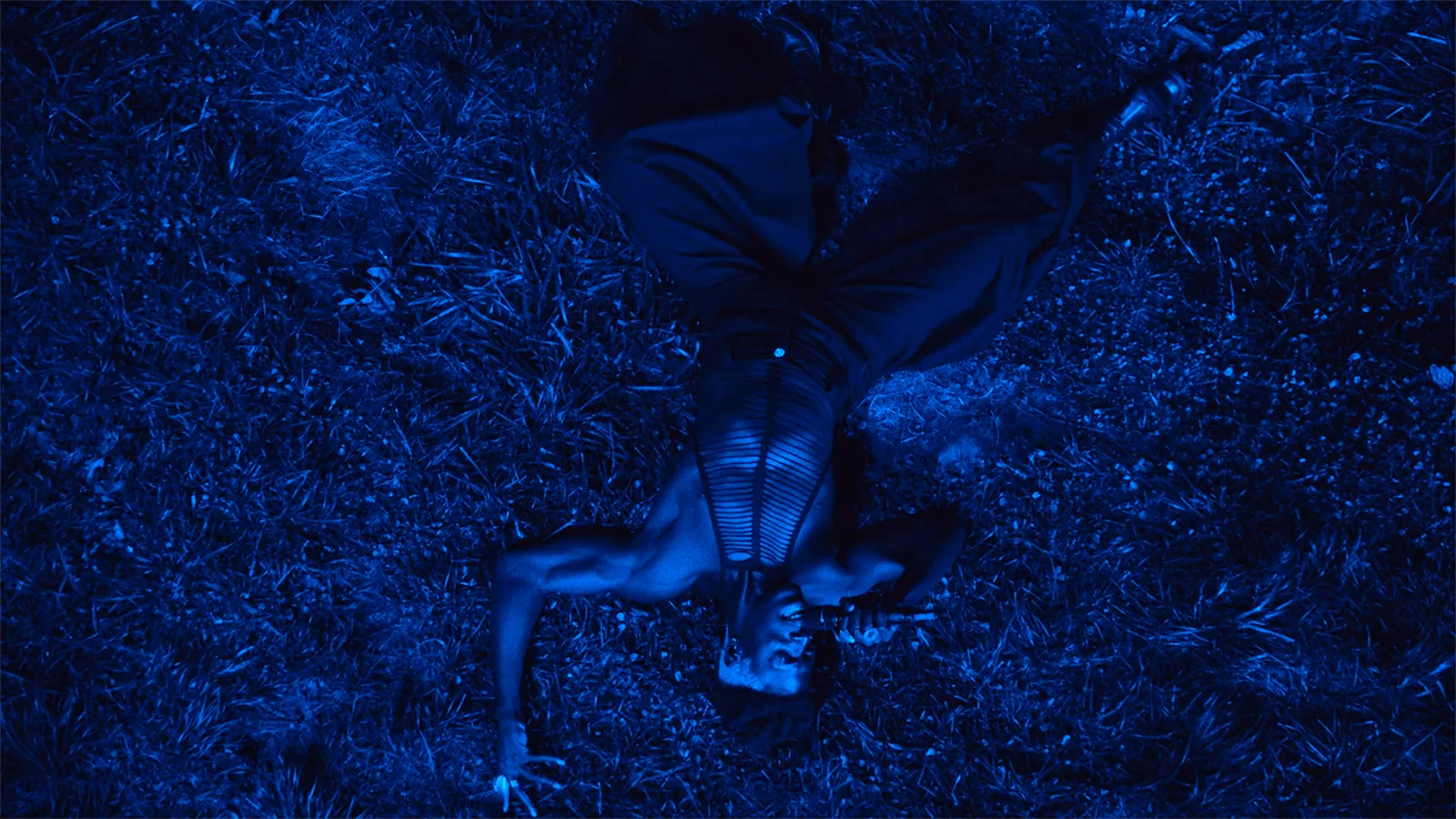
On the first shoot day, the skies cleared. “It should not have worked,” he says. Given the amount of coverage needed, there was only enough time to do each performance twice. “We’re shooting live music. We’re not using backing tracks, and so we have to do full songs and we have to do them right.” Sumney, who dashed back and forth from subject to director on set, tells me that he ended the shoot uncertain of the viability of the takes.
What was coalesced in the editing room is a personal statement of the auteur, who looks backward as he moves forward. “Blackalachia is a time capsule,” he says. “It’s made the way it is made because of the year that it was.” He is curious to see how viewers will process this rare record of live performance. “Are people going to get it?” he questions, smiling. “The further I get into my career as an artist, the bolder I get, and I find that I’m more willing to reach further outside of myself, into these kinds of dreams and ideas.” He is unearthing elements of his personality he’d unconsciously hidden, aware that they were extraneous to established narratives—that of the indie artist, the modern Black artist, the experimental filmmaker. He’s going blue.


